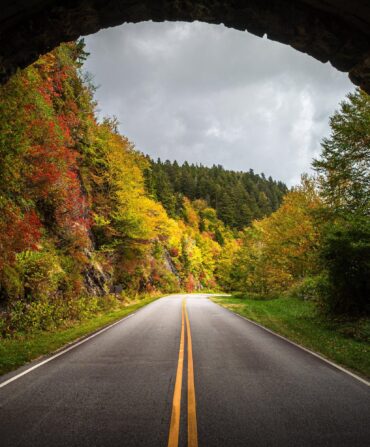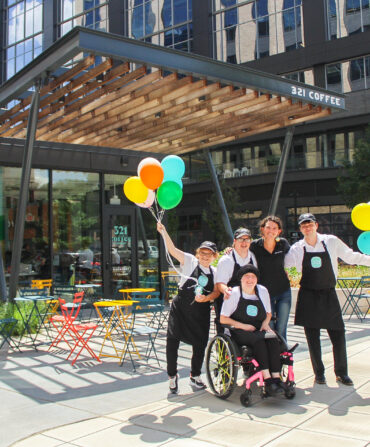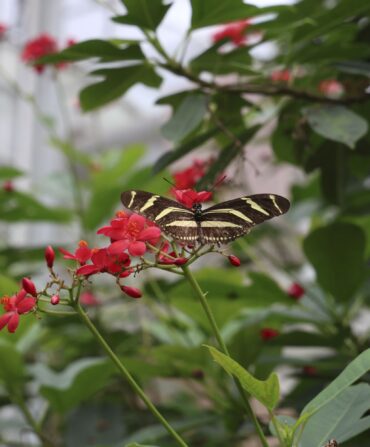1. Abe Cortez
The Mad Hatter
Perhaps no one else in Texas knows hats quite like Abe Cortez—and that’s no small feat in a state where headgear is as ubiquitous as pickup trucks and tacos. Better known as Abe the Hatter, Cortez manages the shop floor at Paris Hatters, a San Antonio institution since 1917 that belonged to his uncle and his dad. “After school, I’d come and roller-skate on the sidewalk outside,” Cortez says. “This shop is home. I’ve [sold hats] ever since I could walk.” With an intuition honed over a lifetime, Cortez is the man to see to find your perfect topper. He’ll even hand crease Western hats according to style preference—rancher, bull rider, Fort Worth, or tycoon. And it’s not just cowboys and tourists who have benefited from his expertise. He’s outfitted the likes of Sammy Davis, Jr., Johnny and June Cash, the King of Spain, and Pope John Paul II, who took home a big white Stetson. But despite the celebrity attention, you’ll still almost always find Cortez on the floor attending to customers himself. “It’s like throwing a football,” he says. “When you’ve done it a while, it’s just second nature.”

2. Johnny Hernandez
Flavor Ambassador
Not only is chef Johnny Hernandez helping put San Antonio on the culinary map, he’s also turning Mexican food stereotypes on their outdated cabezas. A San Antonio native, Hernandez creates dishes that are far more diverse, nuanced, and even (shock) healthier than the chips-and-queso-joint standards. At his first restaurant, La Gloria, he introduced a menu highlighting the street food of interior Mexico, a region he studies like a food anthropologist. “It is a shift toward a more authentic taste of San Antonio’s history and culture,” he says, “not a diluted Tex-Mex version of it.” His empire has since spread to other enterprises: the funky Frutería, the upscale Casa Hernán, and, set to open in late 2014, a second La Gloria restaurant and marketplace, where Hernandez plans to sell Latin America–sourced ingredients such as the farm-fresh cacao that he imports straight from Guatemala. But his eyes really light up when he talks about his next project—San Antonio’s first-ever asadero, a classic Mexican all-wood-fired outdoor grill that will spit-roast house-made sausages, lamb, whole fish, and plenty of carne asada. “It’s a step back in time,” Hernandez says. “All meat and wood in your face…very rooted in tradition.”

3. Naomi Shihab Nye
Poet of Place
“I remembered the old men / in the west side café / dealing dominoes like magical charms,” writes Naomi Shihab Nye in her poem “San Antonio.” Full of her own particular magic, Nye was born in St. Louis to a Palestinian father and an American mother, settling in San Antonio in her teens. For the last thirty-five years she and her husband have lived in a Victorian cottage near the river, putting down roots as deep as towering Texas pecan trees. With more than ten books of poetry, four Pushcart Prizes, and multiple children’s books and young adult novels—including Going Going, set in San Antonio—under her prolific belt, Nye has found plenty to inspire her here, whether walking by the river or simply enjoying the city’s friendly mix of people. “I don’t think the warmth here is just a stereotype,” she says. “We have a general hospitality that is palpable.”

4. Sonny Collins + Penelope Speier
Conservation Crusaders
By the time Sonny Collins joined the board of the San Antonio River Foundation, in 2005, there had been talk of improving the city’s blighted waterway for half a century. A third-generation Texan who had spent years working in finance in New York, Collins quickly became a driving force behind the endeavor, raising millions for art and landscaping, working closely with city and county officials, and making “about eight thousand trips” up and down the river, which in spots had deteriorated to little more than a squalid creek. “The entire city pulled together in the same direction,” he says. “Everyone got behind the project and got it done.” Today, the beautifully restored thirteen-mile stretch from the Pearl Brewery Museum Reach down to the southern edge of the Mission District is the most visible symbol of the city’s renaissance. Meanwhile, Collins’s partner, Penelope Speier, a contemporary painter and arts activist, is working to make sure the next generation understands the waterway’s importance. Speier’s o4ARTS Foundation developed “Moving Waters,” a curriculum used in inner-city schools that helps children discover how they, too, are connected to the river. “We are still working,” Collins says. “This is for the future. The golden age of San Antonio is still ahead of us.”








